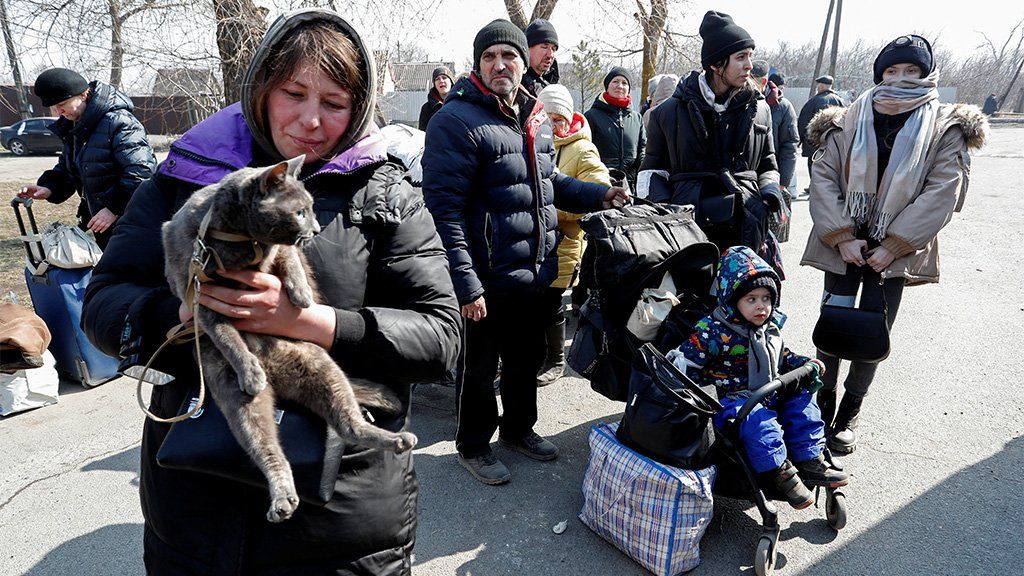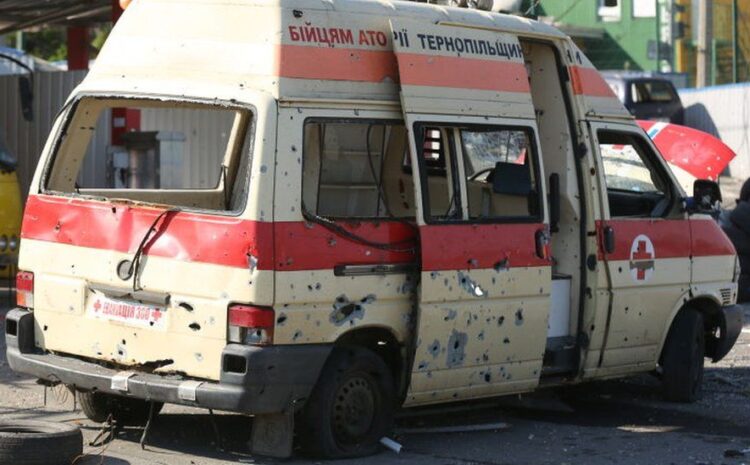
IMAGE SOURCE, GETTY IMAGES Image caption, Many medical facilities in Mariupol have been destroyed
By Ben Tobias
BBC News
Much of the city’s infrastructure is damaged or destroyed and water has mixed with sewage, according to the UN.
Cholera is usually caught by eating or drinking contaminated food or water and is closely linked to poor sanitation.
Uncollected dead bodies and rubbish add to the unsanitary conditions.
There have been outbreaks of the disease in Mariupol before, and isolated cases have been reported in the past month.
The city’s Ukrainian mayor, Vadym Boychenko told BBC Ukrainian that “cholera, dysentery and other infectious diseases are already in the city”, and that the city has been closed off to avoid a larger outbreak.
Ukraine’s health ministry said it has limited access to information from Mariupol, but has conducted testing in Ukraine-held territory and not uncovered any cases.
 IMAGE SOURCE, MARIUPOL CITY COUNCIL
IMAGE SOURCE, MARIUPOL CITY COUNCILEarlier this week, the UN said that water had mixed with sewage in Mariupol, increasing the risk of a cholera outbreak. The Red Cross has warned that the destruction to sanitation infrastructure had set the ground for the spread of water-borne diseases.

Cholera can ‘kill within hours’

Cholera can be a very serious illness. In the most severe cases, if left untreated, the disease can kill within hours.
It is caused by a bacterium called Vibrio cholerae and people tend to catch it by eating food or drinking water contaminated with the bug.
The spread of cholera is closely linked to poor sanitation facilities and unsafe drinking water where the bug can thrive and spread.
Once infected, some people get watery diarrhoea and become severely dehydrated. This needs rapid treatment with fluids and antibiotics.
Others get mild to moderate symptoms and many with the disease do not have symptoms at all, but they can still carry the bug in their faeces.
Vaccines and improved sanitation can help get cholera outbreaks under control.

In addition, sanitary conditions in the city are said to be extremely poor, with piles of rubbish on the streets and bodies still lying under the rubble.
“Many corpses are lying on the ground and inside the buildings… bodies are rotting there. Lots of cockroaches, flies. A pile of dirt. Garbage that no one takes out,” Kyiv resident Anastasiia Zolotarova, whose mother left Mariupol last week, told the BBC.
In April, the Ukrainian mayor said more than 10,000 civilians had already died. The battle raged for several more weeks after that, suggesting the death toll could be far higher.
Makeshift cemeteries have been built around the city to deal with the huge number of bodies, and many more are buried in back yards, parks and squares, according to Mr Boychenko
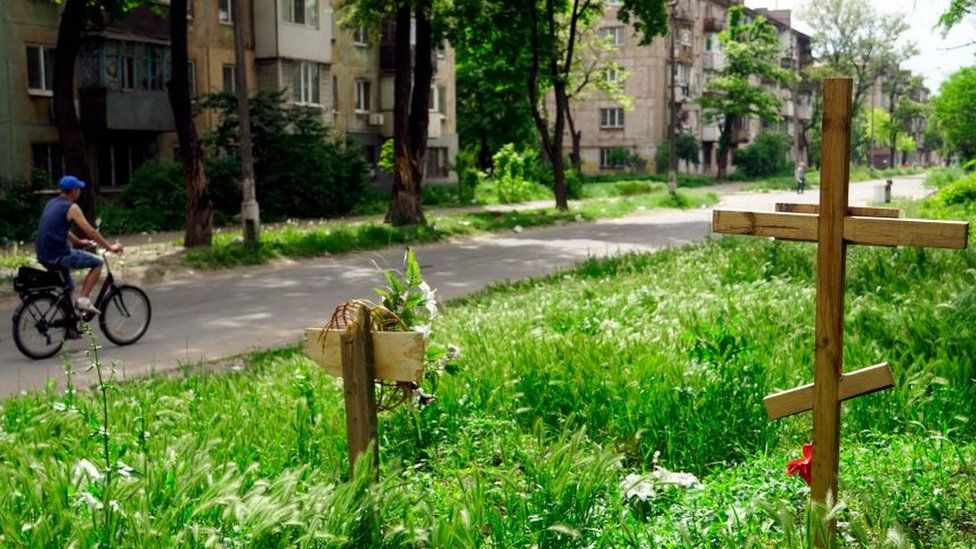 IMAGE SOURCE, GETTY IMAGES
IMAGE SOURCE, GETTY IMAGESEarlier this week, the Mariupol city council warned that a cholera outbreak could kill tens of thousands of people, listing a number of factors that could lead to an “explosive” epidemic, including a lack of medicine and medical facilities.
“They (the Russians) destroyed our infectious diseases hospital with all the equipment, killed the doctors,” Mr Boychenko told the BBC.
Another Ukrainian Mariupol official recently claimed there was a “catastrophic” shortage of medics in the city, adding that the Russian-appointed authorities were trying to persuade retired doctors, even those over the age of 80, to return to work.
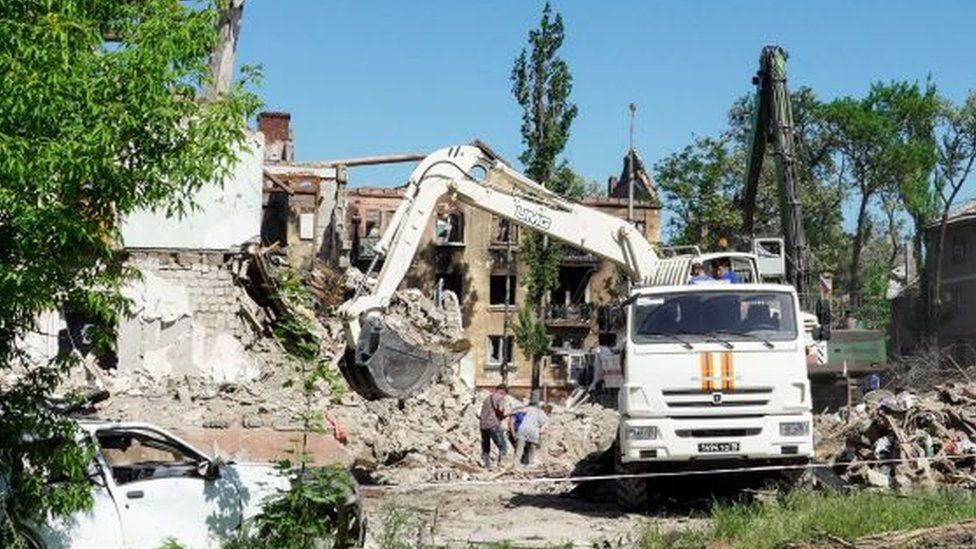 IMAGE SOURCE, GETTY IMAGES
IMAGE SOURCE, GETTY IMAGESBodies lying under piles of rubble and mountains of uncollected rubbish is not the image of Mariupol the Russian-appointed authorities want to portray.
They prefer to describe it as a city returning to normal life, posting pictures on social media of children returning to classrooms and lorries collecting rubbish.
But much of the city still lies in ruins, and an outbreak of cholera or any other infectious disease would be a further huge challenge for the estimated 100,000 people still living there after the horror of the last few months.
Additional reporting by Anastasiia Levchenko
-
Mariupol: 80 days that left a flourishing city in ruins
17 May
-
Mariupol defenders’ bodies in Kyiv – families
2 days ago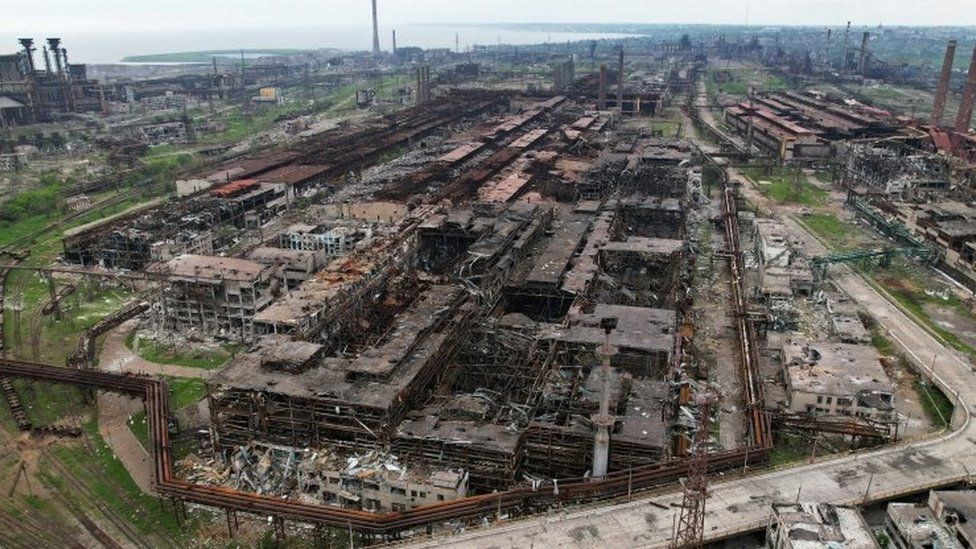
-
Mariupol: Key moments in the siege of the city
17 May